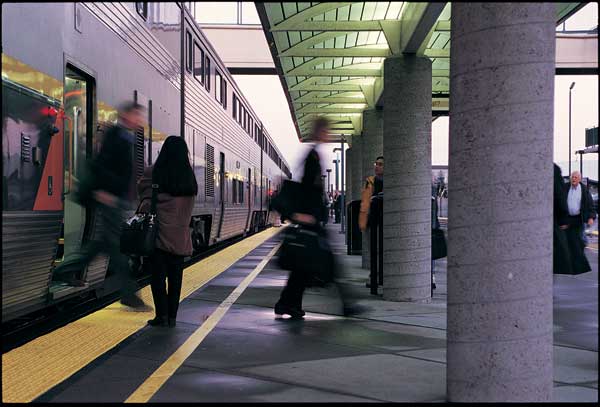
The Capitol Corridor is one of seven agencies selected for projects to improve rail service, reduce air pollution, and ease traffic.
On January 30, 2018, the Capitol Corridor Joint Powers Authority (CCJPA) received notification that it was one of seven recipients of State Rail Assistance (SRA) program funding. The CCJPA applied for the funding in December 2017 and received $13.1 million of the program’s total funding of $51.9 million for FY 2017-18 through FY 2019-20.
These SRA program funds allocated to the CCJPA come from Senate Bill 1 (SB 1), the Road Repair and Accountability Act of 2017, and will be matched with $26.3 million, for a total value of $39.4 million over the three-year period.
“This funding allows the CCJPA to maintain forward momentum with our service enhancement and expansion plans for two segments of the Capitol Corridor route – between Sacramento and Roseville and between Oakland and San Jose,” explained CCJPA Board Chair, Lucas Frerichs. “Based on demographic and economic trends, these segments of the Capitol Corridor have tremendous ridership potential, and a portion of the SRA funds will be used to advance the planning and design for projects that will allow for increased service levels.”
In addition to the service enhancement and expansion projects, approximately $5.3 million of the CCJPA’s $13M allocation of SRA funds will also go towards critical safety and reliability initiatives.
“Longer-term expansion must go hand-in-hand with a focused commitment to improving how we deliver existing service,” added David Kutrosky, managing director of the CCJPA. “That’s why we intend to invest a portion of these funds immediately in projects to improve the overall passenger experience. These initiatives include upgrading the signal control system to boost reliability; implementing programs to deter trespassers from illegally accessing the trackways; and upgrading the information communications system used to provide real-time train arrival/alerts to our passengers.”
Following is an overview of the four projects financed with CCJPA’s $13.1 million SRA fund allocation:
- Pre-construction environmental and design work for rail and station infrastructure improvements [$7.8M]: Along with other funds, conduct pre-construction environmental and design work to support service improvements and frequency expansions in corridor segments served by Sacramento to Roseville and Oakland to San Jose trains.
- Signal Replacement/Upgrade [$1.9M]: Along with CCJPA and Union Pacific funds, replace outdated signal systems to avoid signal system interruptions and train delays.
- Safety and Security Improvements [$2.3M]: Fund measures to reduce illegal public intrusion along the rail right-of-way to reduce pedestrian injuries and death.
- Passenger Information System Replacement/Upgrade [$1.1M]: Fund the components that deliver improved passenger train arrival/alerts via all communication channels, including signs, servers, data, and software.
Read the official CalSTA press release about the SRA funding award and see the complete list of projects that received SRA funding.
Senate Bill 1 (SB 1), the landmark transportation infrastructure bill signed by Governor Brown in April, will provide $7.6 billion in new transit funding over the next decade. For complete details on SB 1 visit www.rebuildingca.ca.gov.
About the Capitol Corridor Joint Powers Authority
The Capitol Corridor Joint Powers Authority (CCJPA) is the managing body of the Capitol Corridor. The Capitol Corridor is an intercity rail service connecting the most economically vibrant urban centers in the Northern California megaregion – from the Sacramento capital, to the tech hub of Silicon Valley, and including San Francisco, Oakland, and Berkeley. With a Café Car and free wi-fi on board, Capitol Corridor trains provide a convenient, reliable, and comfortable alternative to the congested I-80, I-680, and I-880 freeways for both work and leisure travelers. For details about the Capitol Corridor, visit www.capitolcorridor.org.
